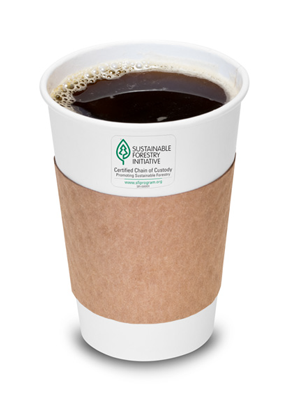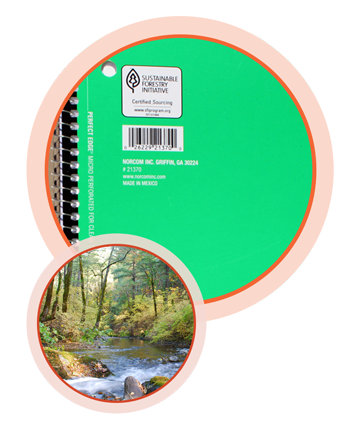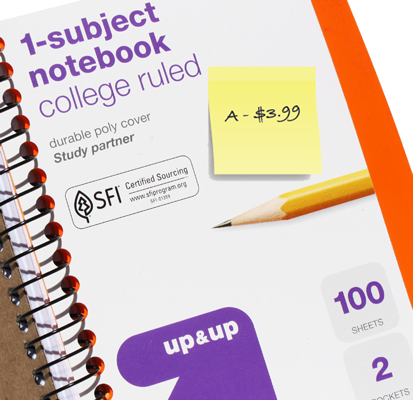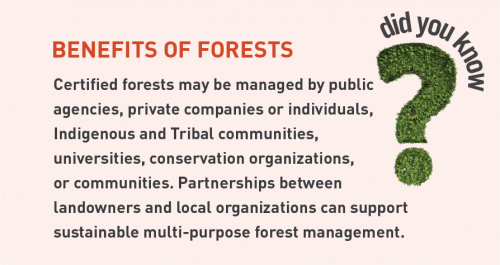 Key Concept: Forest certification standards include measures to ensure social, economic, and ecological dimensions of sustainability. It includes maintaining forest and ecosystem health (e.g. biodiversity, wildlife, water, and soils), productivity, and diversity, and conserving a forested land base for the needs of present and future generations. [PLT’s Forest Literacy Framework, Concept 3.E.5]
Key Concept: Forest certification standards include measures to ensure social, economic, and ecological dimensions of sustainability. It includes maintaining forest and ecosystem health (e.g. biodiversity, wildlife, water, and soils), productivity, and diversity, and conserving a forested land base for the needs of present and future generations. [PLT’s Forest Literacy Framework, Concept 3.E.5]
Objectives: Provide opportunities and materials for learners to
- Describe and define forest product certification.
- Articulate ways that certification benefits the environment, the people who rely on forests, and the end consumer.
Session Time: 50 minutes
Setting: Indoors or Outdoors
 Our society depends on forests for timber and other forest products, as well as for wildlife, clean air, water, and recreation. People in the forestry field work to manage forests sustainably so that forests provide all the things we need and want from them while remaining vigorous and healthy.
Our society depends on forests for timber and other forest products, as well as for wildlife, clean air, water, and recreation. People in the forestry field work to manage forests sustainably so that forests provide all the things we need and want from them while remaining vigorous and healthy.
Forestry is more than just planting trees, fighting forest fires, or harvesting logs, although managing those tasks may be part of a forester’s responsibilities. Forestry also includes professionals who specialize in individual parts of the forest, such as soils, water, or wildlife. Foresters also must have skills in the areas of soil science, hydrology, and wildlife management and can perform activities related to computer modeling, mapping, statistical and budget analysis, and education.
Information about certification is often communicated through an on-product label to help consumers recognize the product as originating from a sustainable source. The two most common forest certification labels in the U.S. are Sustainable Forestry Initiative (SFI) and Forest Stewardship Council (FSC).
Project Learning Tree is an initiative of the Sustainable Forestry Initiative, a non-profit organization which advances forest sustainability through its work across the areas of conservation, community engagement, education and through its certification standards.
Materials:
Two identical spiral-bound notebooks, large self-stick notes, sample product with a certification label (optional), and paper and pens.
Get Ready:
Using self-stick notes, label one notebook “A – $3.99” and the other “B – $2.99,” leaving room for additional information on each. Arrange for learners to tour your site, either in person or virtually.
Introduce
Display the two notebooks and ask learners which they would buy. (You may have them raise their right hand to indicate the notebook on the right and their left hand for the one on the left.) Share the following statements and ask which they would choose with each new piece of information:
- Notebook A contains 50% paper fiber from sustainably harvested forests; Notebook B does not. (Write “50% sustainable” on Notebook A.)
- Notebook A’s other 50% paper fiber is from recycled content; Notebook B’s paper fiber is from unknown sources. (Write “recycled content” on Notebook A.)
- The company that made Notebook A works to support the local community; the one that made Notebook B does not. (Write “supports community” on Notebook A.)
Discuss: How did your choice change as you got more information?
Experience
- Introduce the term “forest certification” and ask learners what they think it might mean. You might ask them whether they’ve ever received a certificate for completing a program and to describe what it means to certify something.
- Point out that forest certification is a process in which an independent certification body makes sure the organization that manages the forest, or company that manufactures the product, meets certain requirements. A forest certification label on the final product shows consumers that it meets those requirements, which often fall under three categories:
-
- Environment: positively contributing to the health of the forest and ecosystem, biodiversity, wildlife, water, and soils
- Economics: using resources efficiently over time
- Social: taking responsibility for the well-being of people.
You may want to share a sample product with a certification label.
- Invite learners to imagine that their job is to certify forests. Have teams of two to four learners create a list of requirements they would include in their certification system under the categories of Environment, Economics, and Social. Have them put a star next to the five requirements they think are most important.
- Ask teams to share their lists.
Connect
Take learners on an actual or virtual tour of your site, focusing on its role in forest product certification. Encourage learners to ask questions about the benefits and challenges of the certification process.
Discuss:
- How does forest certification help the forest, the people who live in or near forests, or businesses?
- What might be some of the challenges with forest certification?
- What are your thoughts about forest certification?
TAKE ACTION!
Challenge learners to look for forest product certification labels at home, in stores, or in the community. Encourage them to research and identify what specific labels signify.
 Forest certification is one way to ensure that forests are sustainably managed. Learners draft environmental, economic, and social criteria for certification.
Forest certification is one way to ensure that forests are sustainably managed. Learners draft environmental, economic, and social criteria for certification.

 Key Concept: Forest certification standards include measures to ensure social, economic, and ecological dimensions of sustainability. It includes maintaining forest and ecosystem health (e.g. biodiversity, wildlife, water, and soils), productivity, and diversity, and conserving a forested land base for the needs of present and future generations. [PLT’s Forest Literacy Framework, Concept 3.E.5]
Key Concept: Forest certification standards include measures to ensure social, economic, and ecological dimensions of sustainability. It includes maintaining forest and ecosystem health (e.g. biodiversity, wildlife, water, and soils), productivity, and diversity, and conserving a forested land base for the needs of present and future generations. [PLT’s Forest Literacy Framework, Concept 3.E.5] Our society depends on forests for timber and other forest products, as well as for wildlife, clean air, water, and recreation. People in the forestry field work to manage forests sustainably so that forests provide all the things we need and want from them while remaining vigorous and healthy.
Our society depends on forests for timber and other forest products, as well as for wildlife, clean air, water, and recreation. People in the forestry field work to manage forests sustainably so that forests provide all the things we need and want from them while remaining vigorous and healthy.
